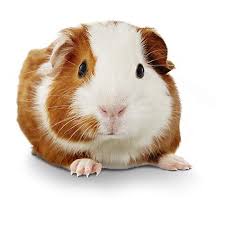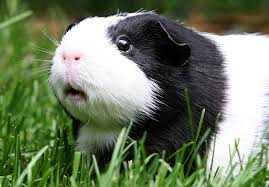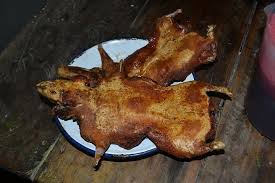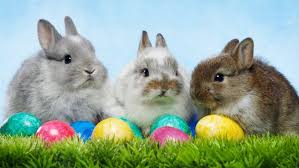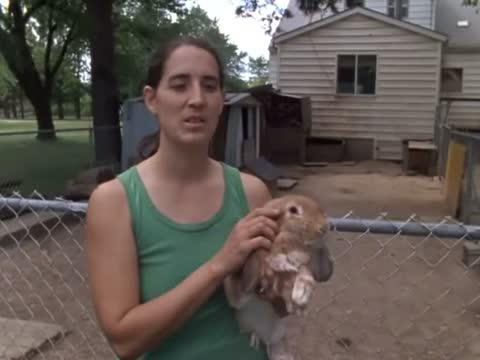A Harsh Reality
I found the guinea pig nestled in the back corner of the linen closet. He had escaped from his cage a couple of days before, at least that’s when somebody noticed he was gone, because my brother had lost interest in his pet. My mother organized a search party.
He stared up at me from his comfortable nest of shredded toilet paper. I admired his ingenuity and thought perhaps he was relishing his freedom. Then I spotted two crayons next to him, a red and a blue one. I could see tiny teeth marks striating the crayon tip.
At ten years old, this was my first introduction to the harsh world of survival. This guinea pig thought he could survive on crayons.
In my secure and tidy suburban world, the idea that some didn’t have enough to eat was a novel concept. This was in the early 1960s and the post-war deprivations lingered in my parents’ minds. I remember my mother saying, “Finish your dinner, there are people starving in Armenia.” Why she particularly chose Armenia was a mystery and her logic escaped me. As I looked into guinea pig’s beady eyes, I saw starvation. I had saved him from a slow and agonizing death.
Convenient Lies and Willful Ignorance
On Christmas morning my four brothers and I would rush into the living room to see the vast array of presents, both under the Christmas tree and in our designated spots on the sofa and chairs. After the initial flush of excitement, we all looked at others’ piles to see if everything was equal. My mother knew this, but this balancing act was tricky. She would peruse the piles on Christmas Eve as she laid out the gifts and would address any mismatch by switching gifts around. If that didn’t work, she might leave a note describing a make-good gift for the underserved. That’s how my brother got his cat, and I assume that’s how someone acquired another guinea pig.
Any delight in the rodent was fleeting. Nobody wanted to take care of it. My mother was left to cope with sprayed woodchips, little pellets and the odor of urine. She probably hoped the guinea pig would get lost in the house again, but more aggressive measures were required when the guinea pig survived until summer. “Hey everybody,” she said, “I’ve got a great idea. Why don’t we let the guinea pig out for the summer? He can eat the grass and stuff, and then in the fall we’ll find him and bring him back inside.”
Even my youngest brothers, eight or nine at the time, must have know we were dooming our pet to a premature and violent death at the hands of our dogs, a fox or a coyote. The slightest show of remorse by anyone would have scuttled the scheme.
But we collectively grabbed onto the convenient lie.
We tacitly convinced ourselves we were acting in the best interests of the guinea pig who would surely value a cage-free life. In mid-summer I spotted him behind a bush. He looked happy and well-fed. The days grew shorter. Summer faded into fall. I briefly thought of the guinea pig, experiencing frost for the first time, shivering in his little nook, but it was too late to right the wrong, there was no search party. Collectively our convenient lie had segued to willful ignorance.
Individually, convenient lies and willful ignorance are vital human skills to help us through tough days, but this was my first experience of lethal nature of the collective and casual combination of the two. When everyone is at fault, no one is.
A Personal Vow
I was working full-time when our children were in grade school. Most mothers worked part-time or had flexible schedules. They relished school drop-off when they would gather over a cup of coffee. I was never able to participate in these bonding moments and felt disconnected from the school scene.
I tried to make amends and participate. In a weak moment of selective amnesia, I agreed to host the class guinea pig for the summer. Within a week, I was sick of the damn thing and predictably my kids had lost interest. Taking a lesson from my mother, I decided to let it go free, but with a twist. I knew I’d be ostracized if I returned an empty cage to the school in the fall, so I built what looked like a sturdy enclosure in the back yard.
The guinea pig escaped as I transferred it outside. Guinea pigs were slow moving objects, weren’t they? How fast could they move on those little stubby paws? This one bolted, streaked across the lawn and scurried under the porch. I lay on my stomach to peer under the porch and saw him crouched against the house’s foundation. eyes. I was in a contest of wills with a guinea pig. My children’s school reputation was at stake.
I inched my way forward in an agonizing army crawl through rocks and rubble until he was trapped. I nabbed him. The guinea pig emitted breathless squeals, and I realized I’d better loosen my grip. Passively letting a guinea pig die a death of freedom is one thing, strangling it another.
At that moment, I vowed never again to allow any pet into our home that pooped inside. No cat, guinea pig, hamster, mouse, reptile. I was not cut out to be a genial guinea pig steward.
The Future
I thought my journey with guinea pigs was complete. Then I heard they are a staple of the Peruvian diet, particularly in the Andean highlands. Guinea pigs have been domesticated for thousands of years and serve as an important source of protein for highlanders. Peruvians eat some sixty-five million guinea pigs per year, often in elaborate cultural rituals.
They can be raised in a small area, even in urban environments, and are twice as efficient in converting food into protein. Heifer International, which focuses on providing sustainable livestock to rural communities, is now promoting guinea pig husbandry. Two males and twenty females can create a sustainable source of protein for a family of six.
Will guinea pigs begin to show up in the meat section of the grocery store or on restaurant menus? Unlikely. Americans have trouble eating anything resembling a pet. French grocery stores are filled with rabbit, but in this country, rabbits are endeared as bunnies and have a starring role at Easter.
In the movie Roger and Me, the director Michael Moore interviews a woman who is selling bunnies for pets or rabbits for food, she doesn’t care which. The customer decides the rabbit/bunny’s fate.
In one horrifying scene the woman fondly pets a bunny and then calmly whacks it with a lead pipe, skins and guts it. She displays no remorse, no recognition of the bright line between a pet and protein source.
Would I eat a guinea pig? Sure I would, either baked, roasted, fried or barbecued. I’m not driven by revenge or in search of bizarre food credentials, and it would take some psychological rewiring for me to bludgeon one to death. However, the fact that guinea pigs are an alternative to carbon-costly beef cannot be ignored. I anticipate the day when everyone will need their own personal emergency protein supply, either a dovecote with pigeons on the roof, a hutch of rabbits, or a herd of guinea pigs on our back patios.
Follow Liza Blue on:Share:

